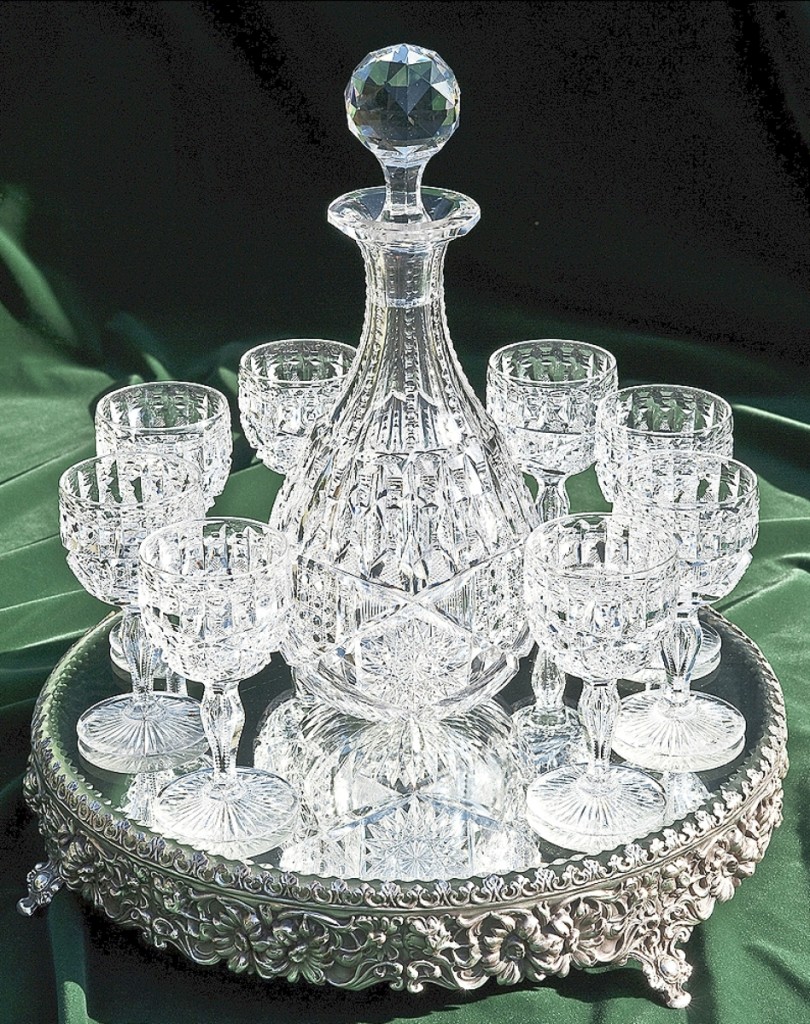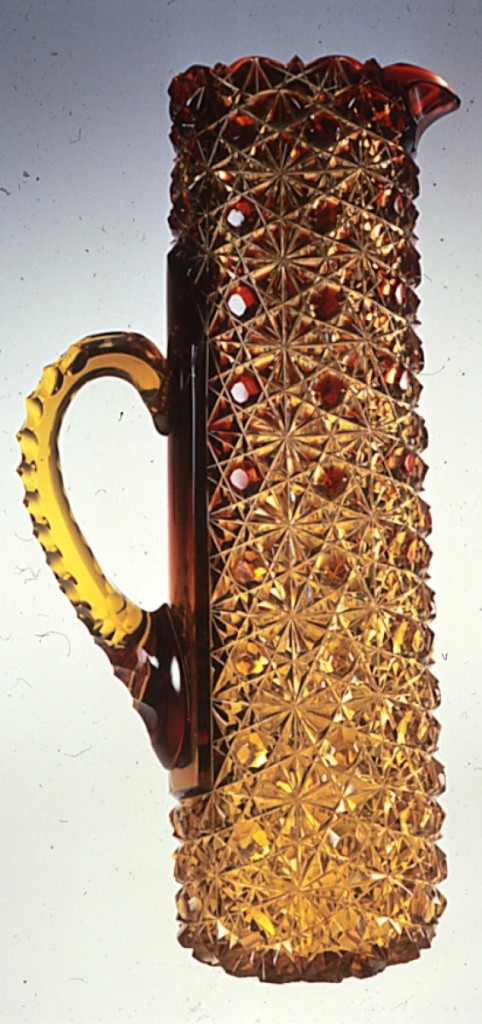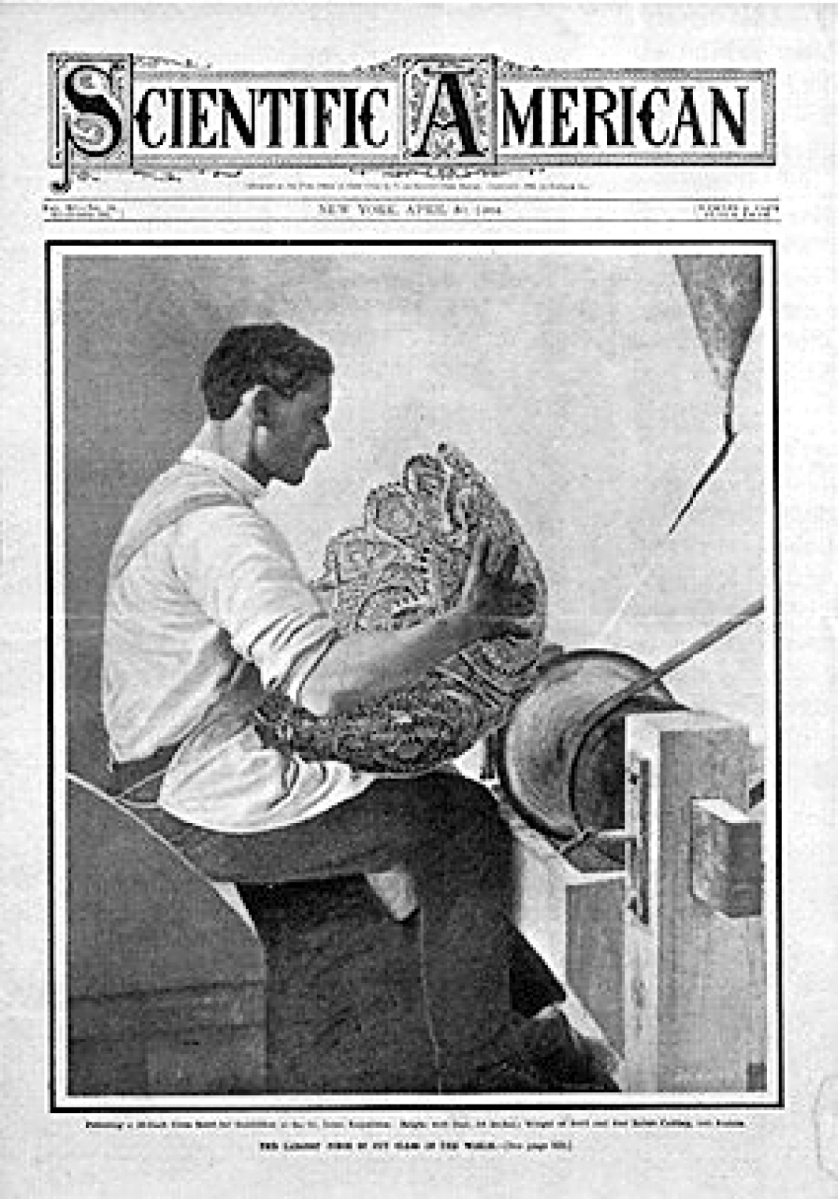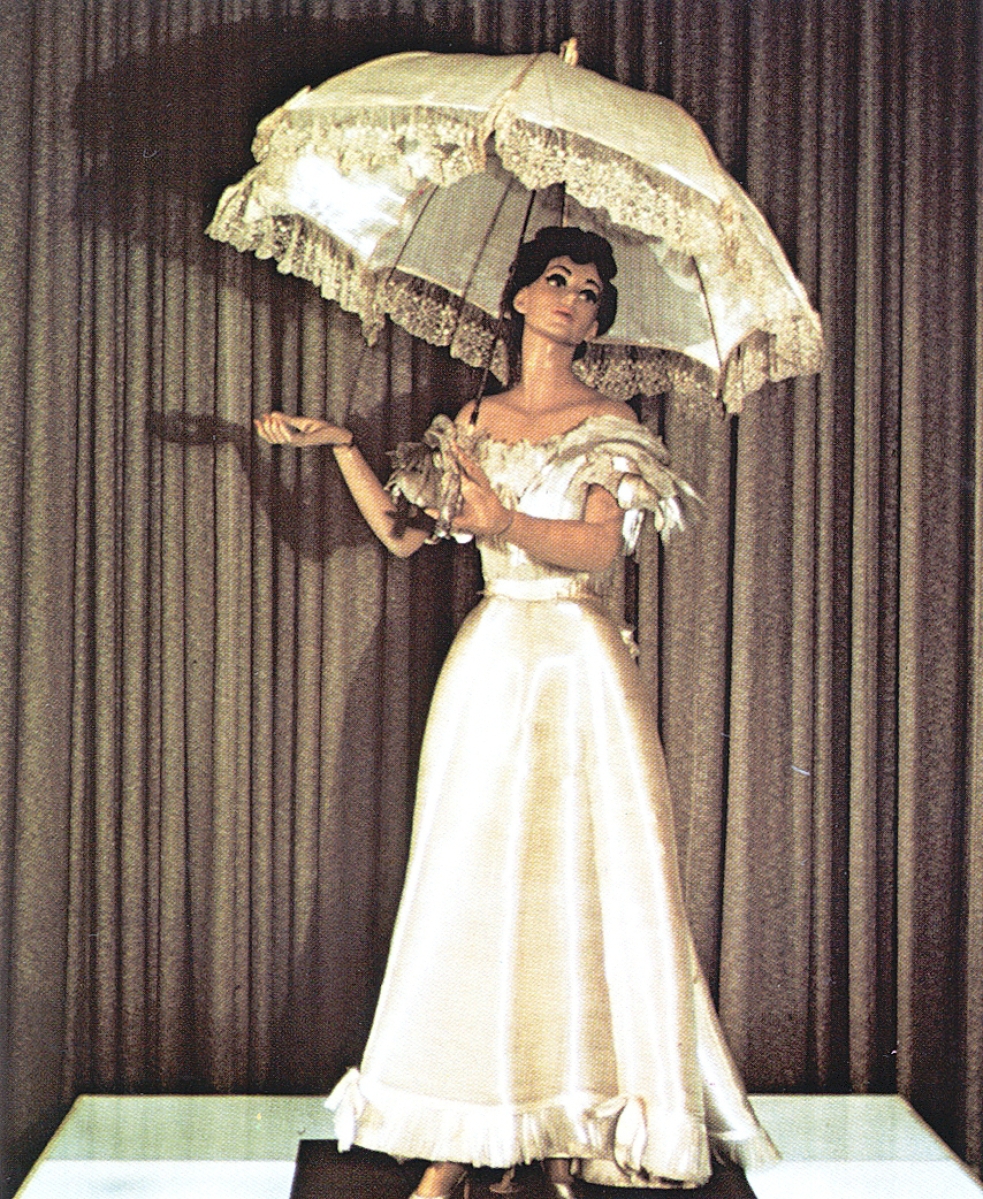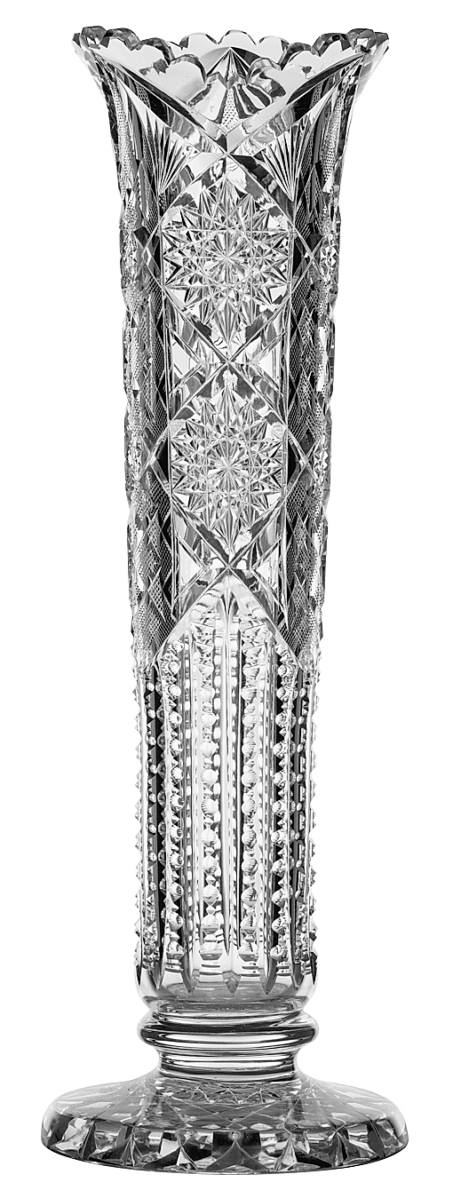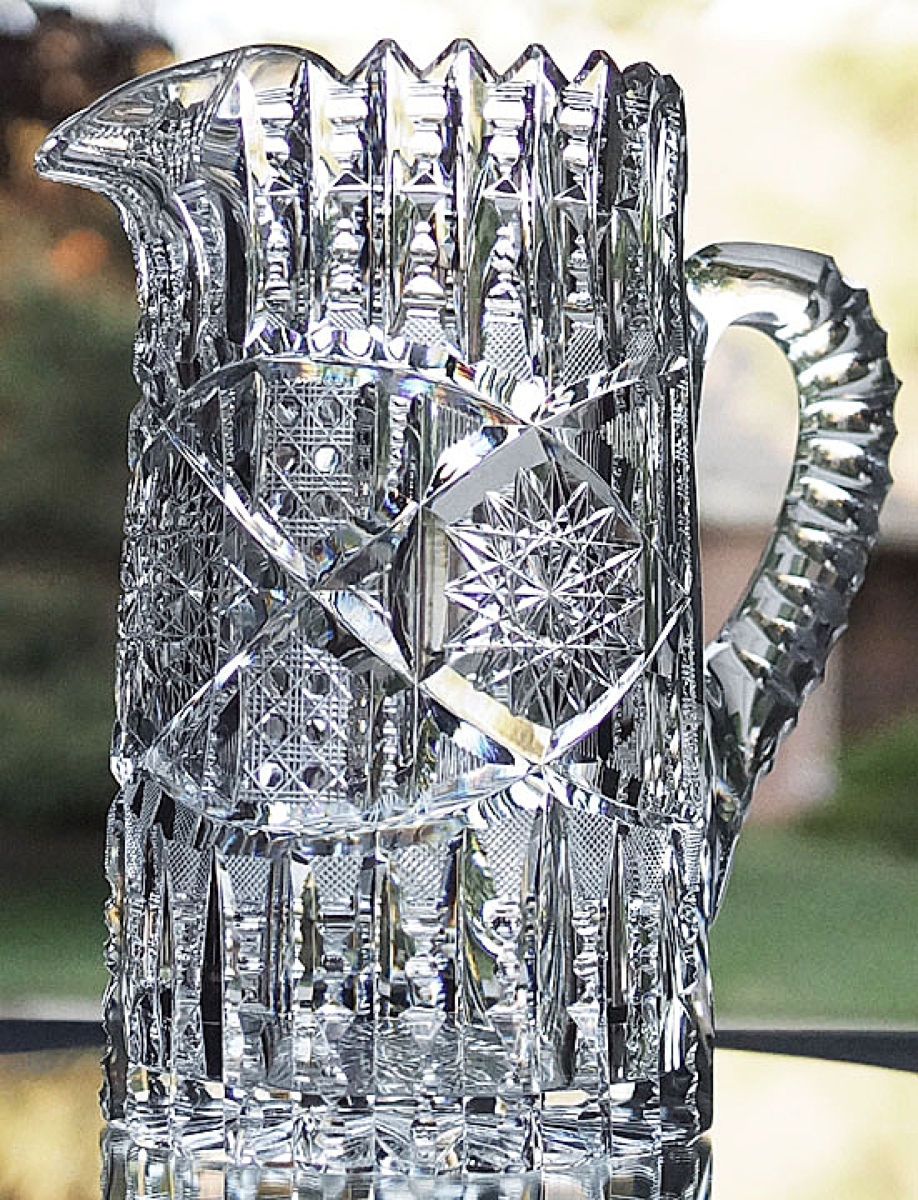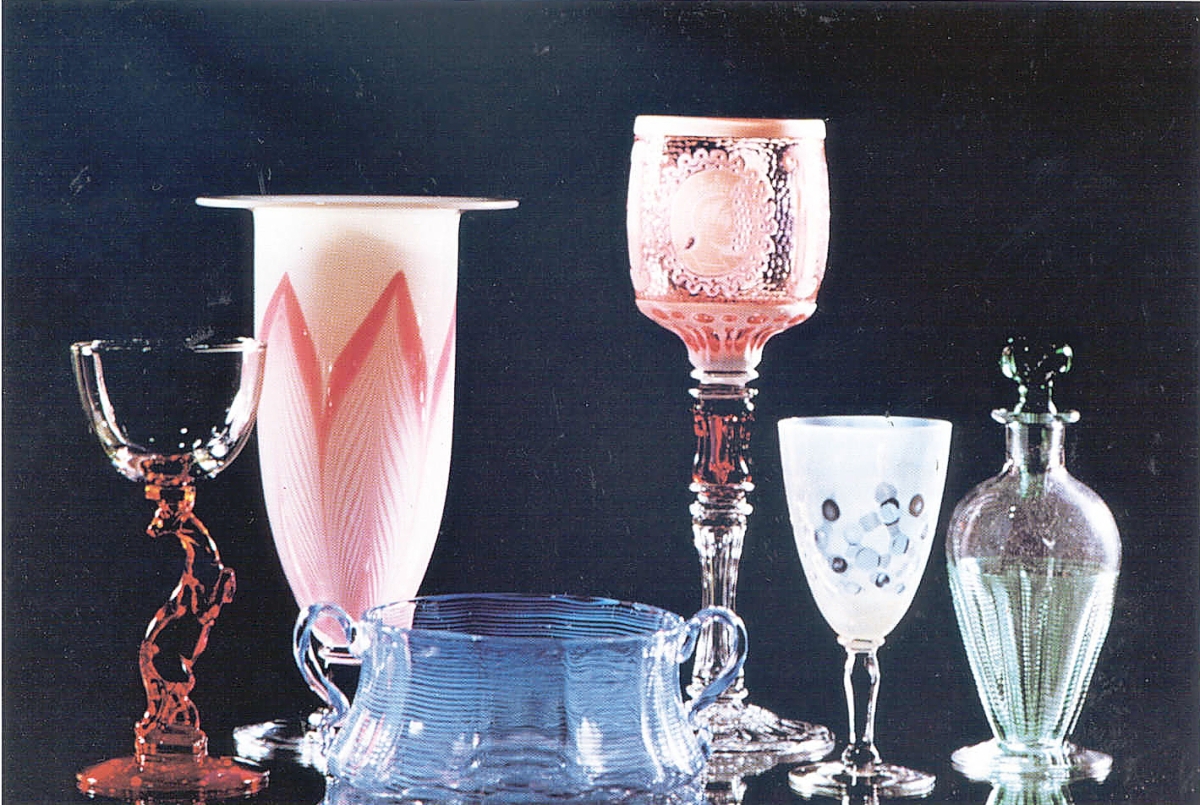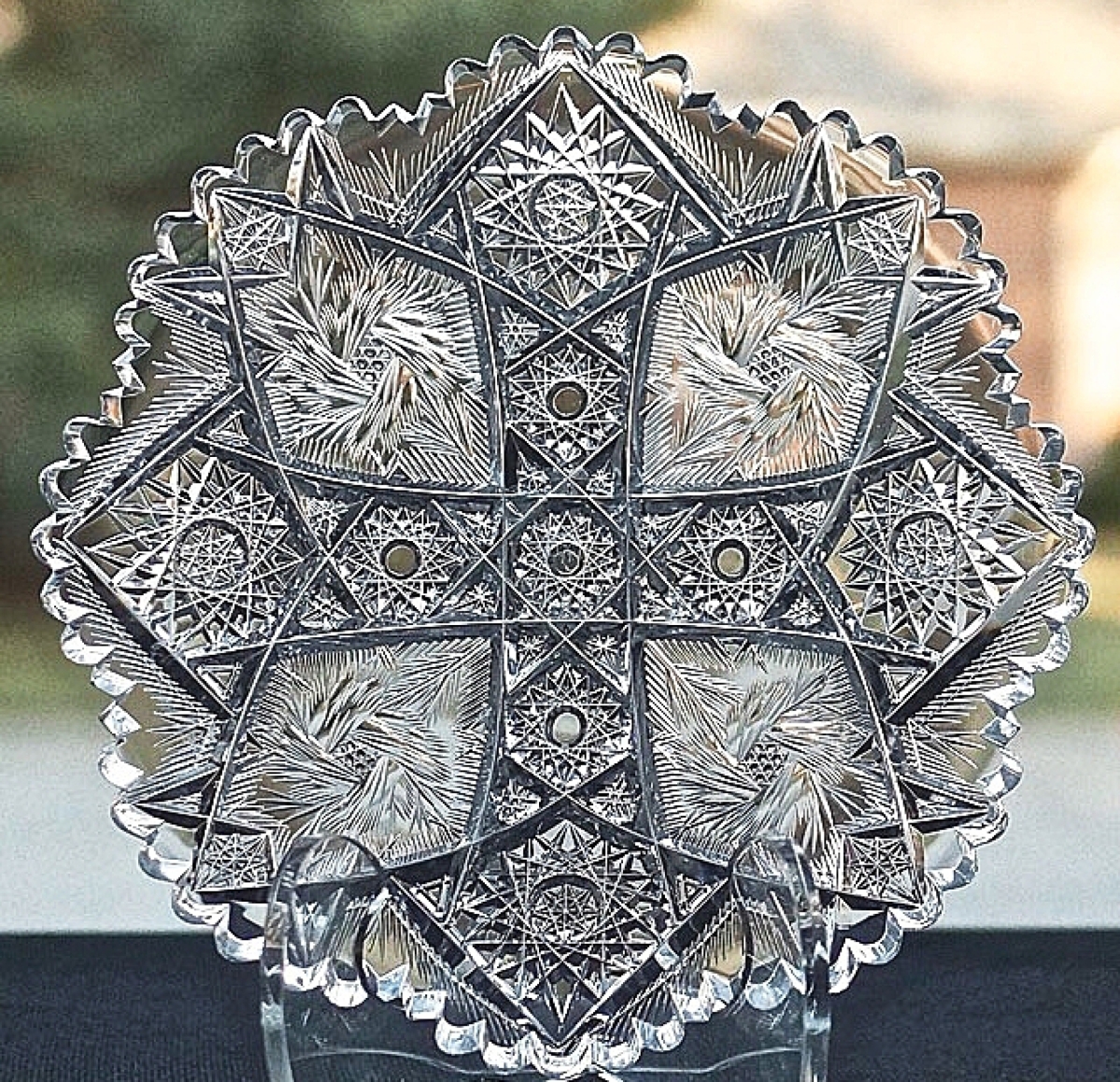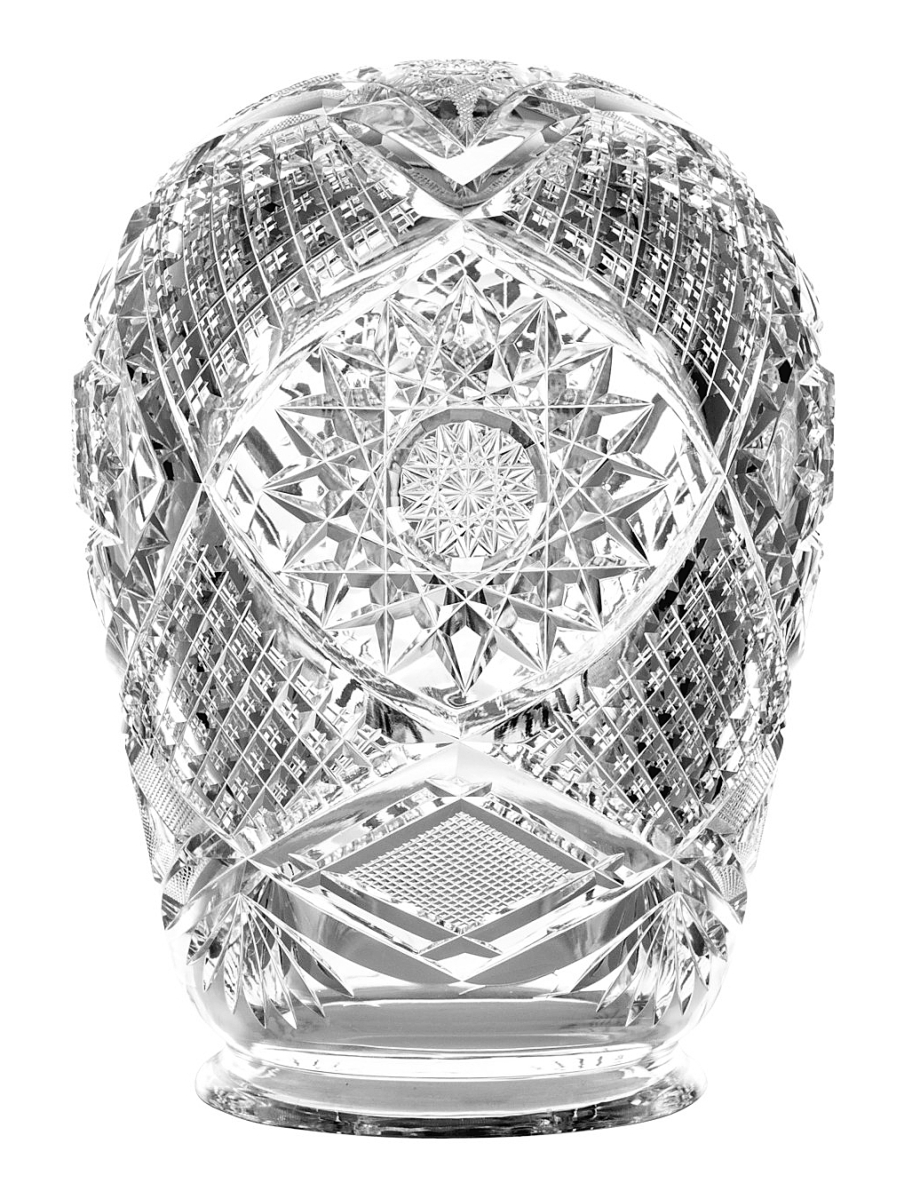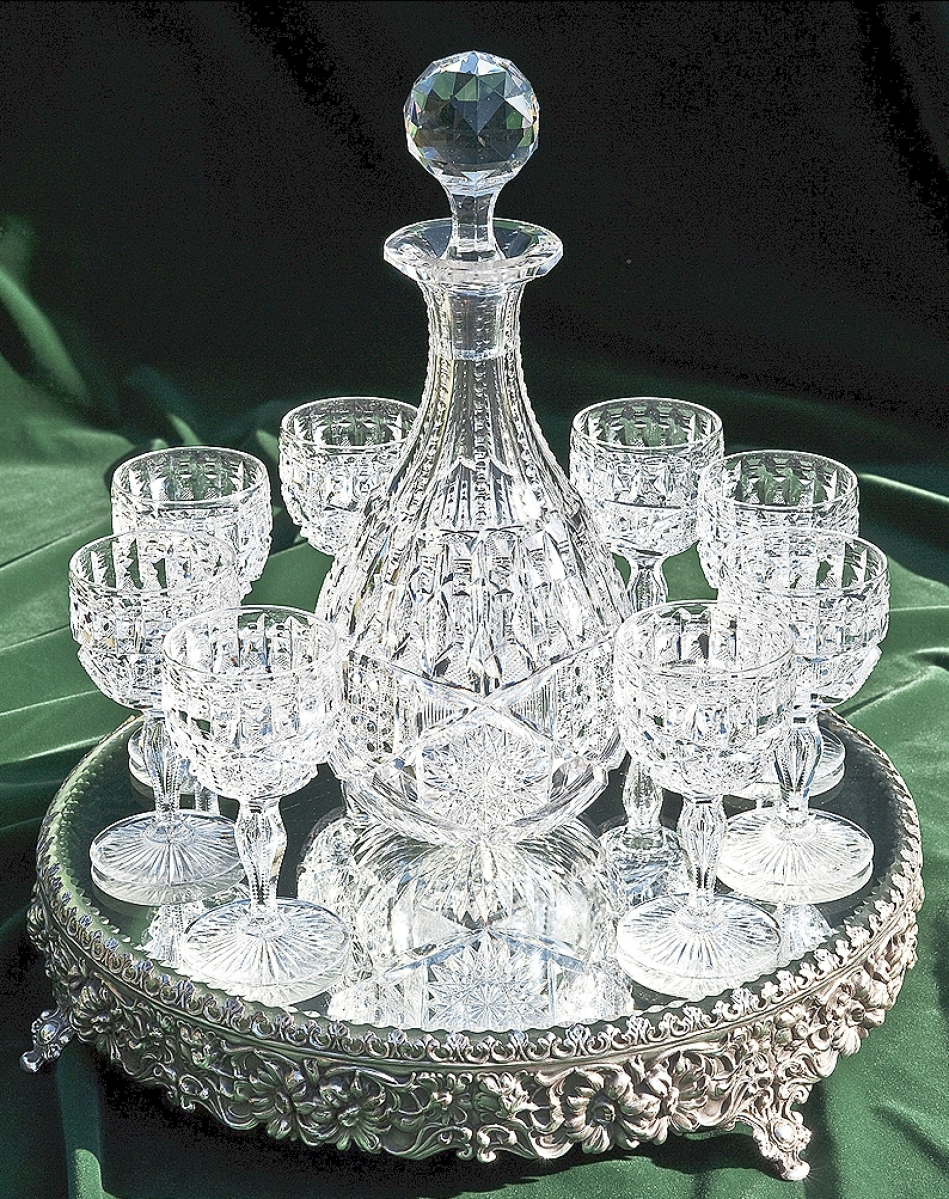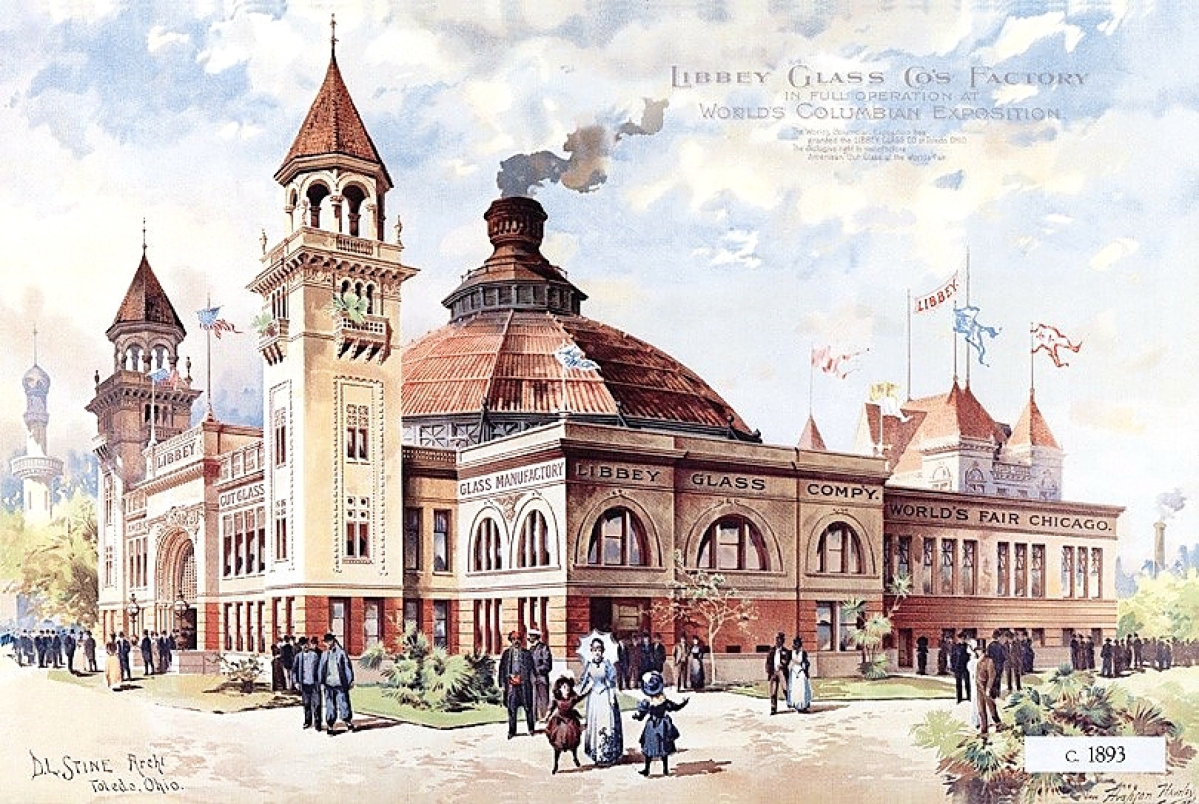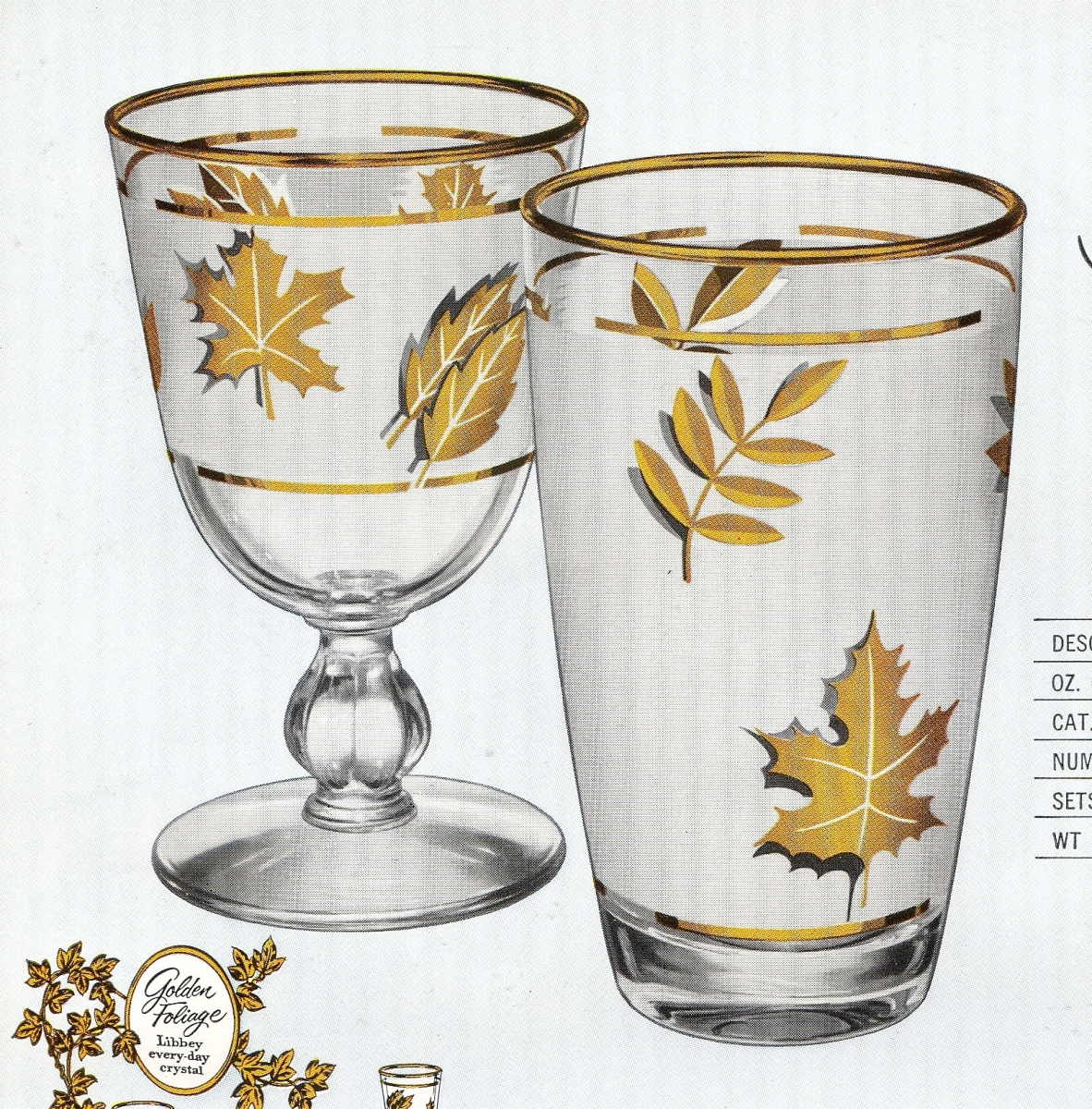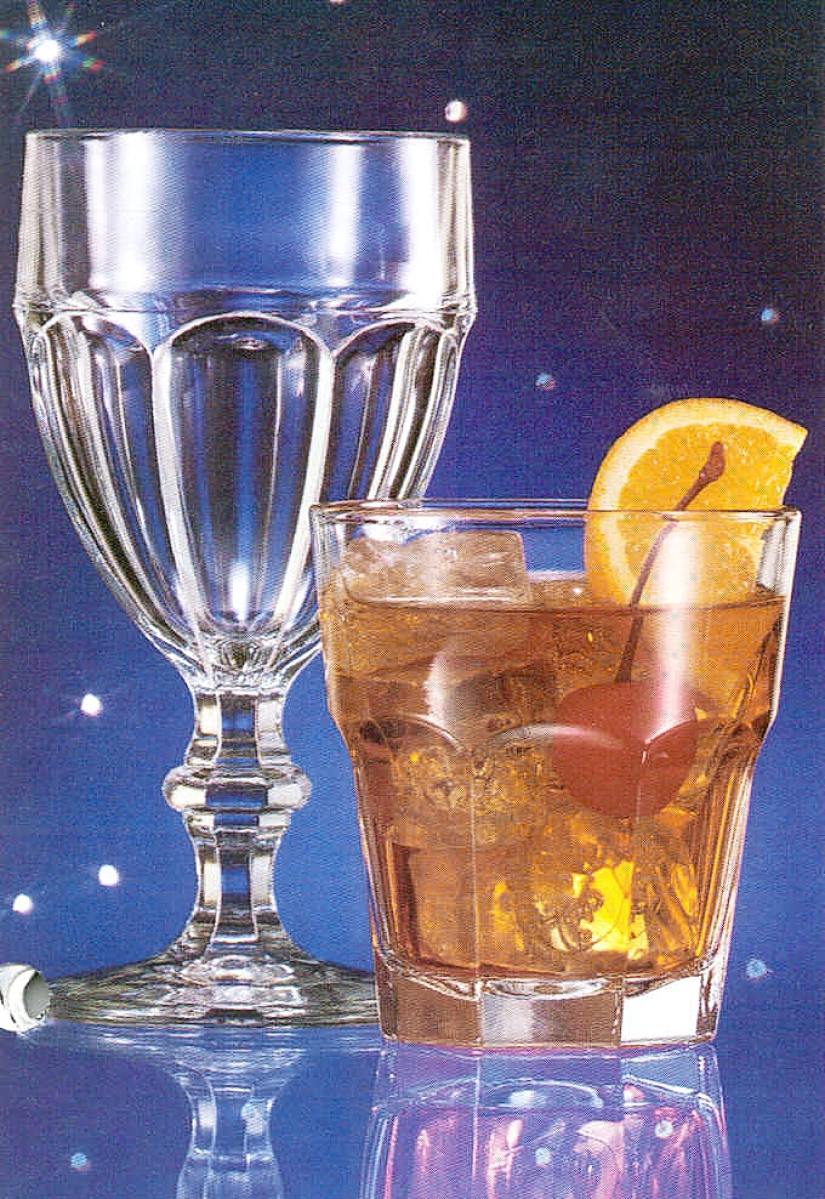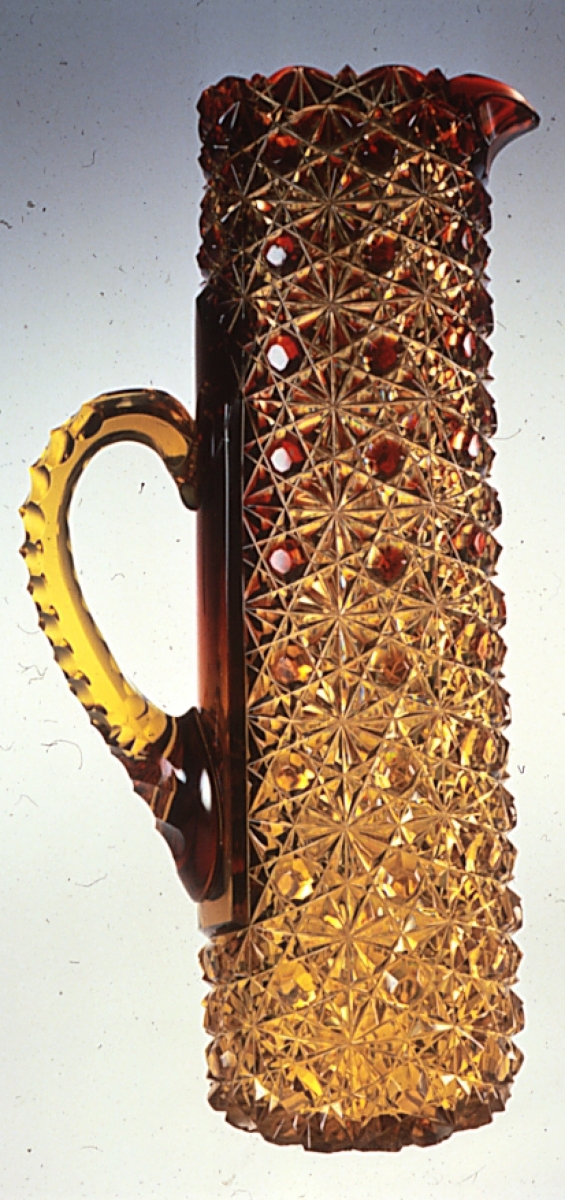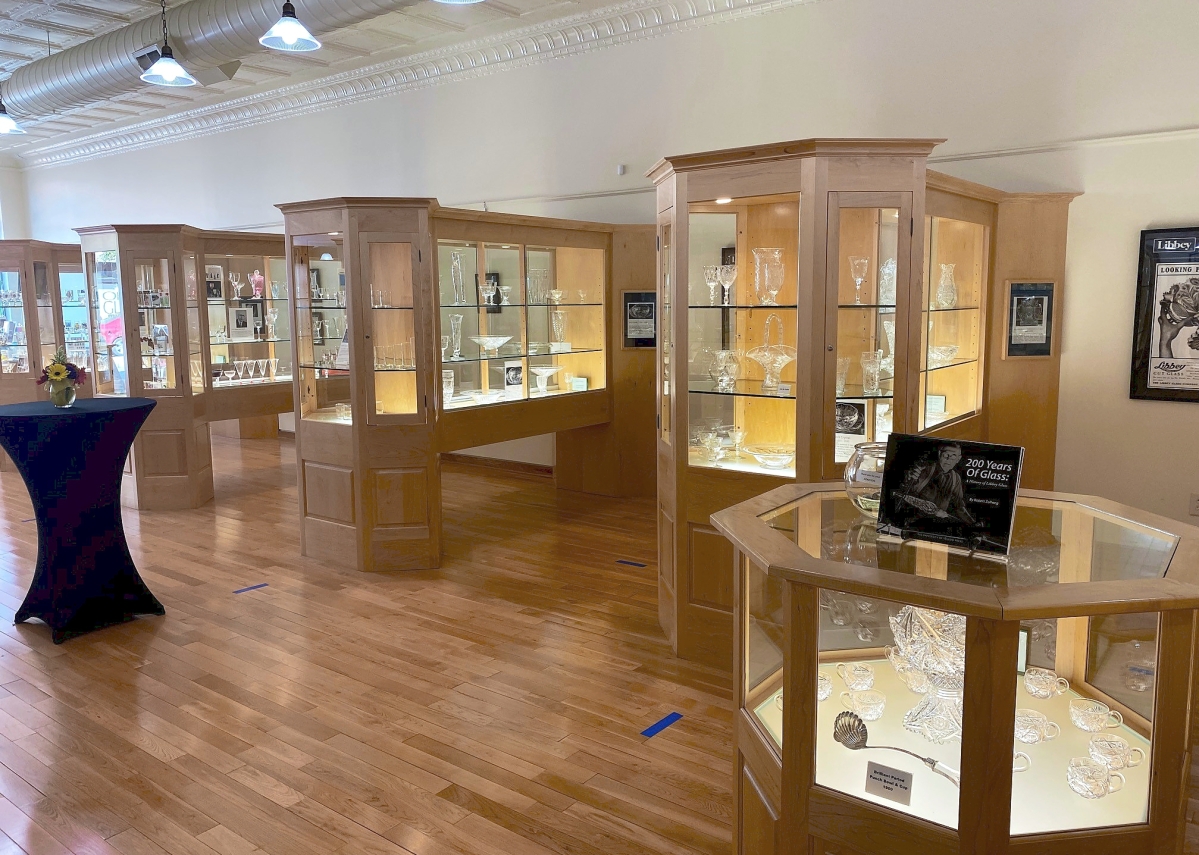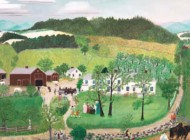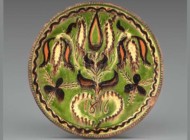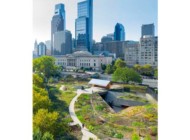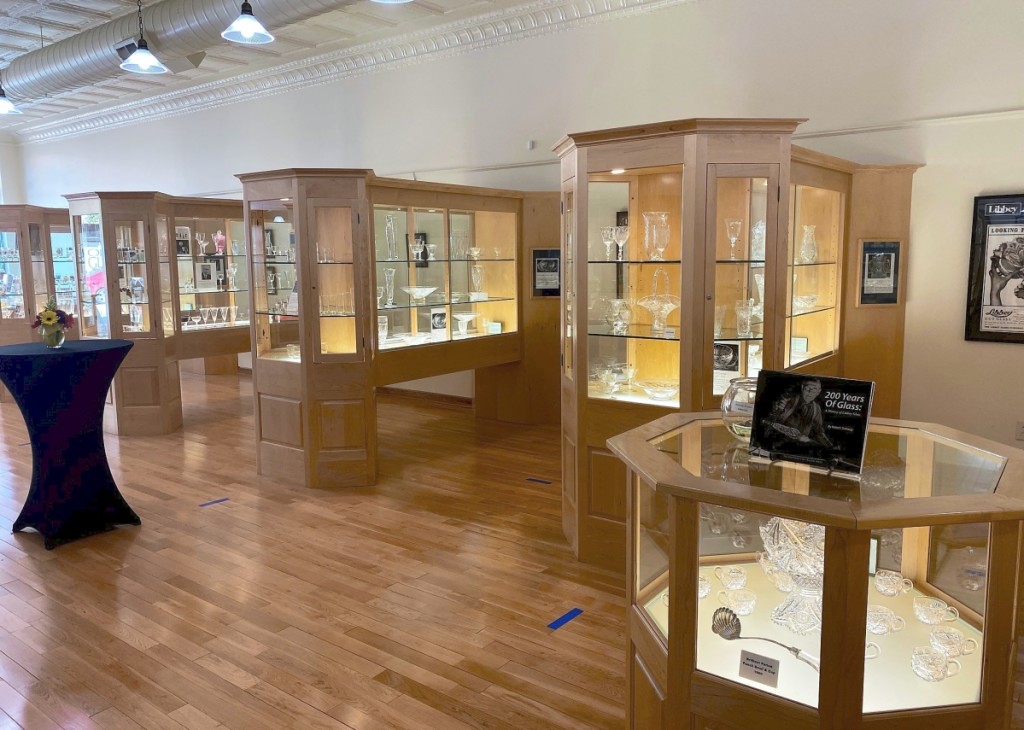
Installation image, “Celebrating Over 200 Years of Libbey Glass, 1818-2021,” at the Ohio Glass Museum.
By Karla Klein Albertson
LANCASTER, OHIO – For many years, the heart of the American glass manufacturing industry lay in the cities of northern and central Ohio. In Lancaster, southeast of Columbus, the Ohio Glass Museum has opened a new exhibition on one of the most important firms, “Celebrating Over 200 Years of Libbey Glass, 1818-2021,” which will run through February 27.
In an interview with Antiques and The Arts Weekly, museum president Mike Shook – himself a veteran of the glass business – began: “First of all, let me say, our purpose is to be the guardians and the keepers of the legacy of glass manufacturing in Ohio. Central Ohio was the epicenter, and so much of that had to do with the discovery of natural gas in the Midwest and its role as an energy source that fueled the fire of the industry.” Also plentiful in the area was sand with a high silica content and a transportation network that used both ships and the railroad to move finished products.
“That’s what we’re all about, and many of our exhibits have showcased the legacy of these various glass manufacturers,” continued Shook. “Many of them are no longer in business and have faded from our landscape over the last 50 to 75 years. Yet, we had never done a feature exhibit for the Libbey Glass Company – and our major contributor is a former artist and designer for Libbey, Robert Zollweg. Without his direct support and hands-on assistance in procuring and collecting the glass which is on display, this event would not have been possible.”
Looking over the exhibits, Shook feels certain, “People will be intrigued and informed, they will become educated and learn about this major company. I’m getting my eyes opened to the history of Libbey Glass, and it’s a wonderful story that was waiting to be told. Robert is an authority for all things Libbey and he’s captured that knowledge in the book that he’s authored.”
So who was Libbey? And what was the course of the company’s production over the 200 years covered by the exhibition? Zollweg has supplied all the detailed answers in 200 Years of Glass: A History of Libbey Glass, published in 2019. Briefly, however, the story begins with William L. Libbey and his son Edward Drummond Libbey (1854-1925) becoming involved with the New England Glass Company in Cambridge, Mass., which had been founded in 1818. In 1883, at his father’s death, the younger Libbey was able to take over the firm. Then in 1888, he moved the entire enterprise to Toledo, Ohio, taking advantage of incentives presented by the city. The name changed to the Libbey Glass Company in 1892 and the modern manufacturing firm is still headquartered in Toledo.
In the years clustered around the turn of the Twentieth Century, Libbey became one of the most important producers of highly desirable brilliant cut glass, examples of which are stars of the current museum show. The dazzling output of the factory came to worldwide notice when spectacular pieces were put on display at popular international fairs such as the 1893 World’s Columbian Exposition in Chicago.
The Official Catalogue of the Exhibits describes the “Glass Cutting Department” in the Libbey pavilion as having “some 40 skilled glass cutters enclosed within a railing, and sitting at their frames cutting the most intricate and beautiful pieces of glass.” At the 1904 Louisiana Purchase Exposition in St Louis, Libbey exhibited a tour-de-force 24-inch diameter cut glass punch bowl, now in the Toledo Museum of Art.
Not surprisingly, Robert Zollweg – organizer of the exhibition and author of the book -worked for Libbey for many years, eventually becoming Design and Creative Director before his retirement three years ago. In an interview, he acknowledged that he still fulfills the role of company historian. For the exhibits on display, he was able to draw on the official Libbey collection as well as his own personal collection with the addition of examples from the earliest days of the company loaned by another collector. How many? He estimates as many as 1,000 pieces vie for attention in the galleries.
“The time period covered by the exhibition is 1818 to the year 2000, and we have the display set up chronologically,” he explains. “So when you come in, the first thing you see is the New England Glass Company display. There are photos of the factory and some of the early pieces.” As the timeline advances, there are colorful art glass innovations like Peachblow and Amberina as well as ample space for brilliant cut glass, then on to more modern shapes.
“Cut glass is probably my favorite, just because it was such a brilliant period and the glass was so exceptional – the sparkle of it and so many different shapes and patterns. I’ve tried to do research on the patterns, and it’s mind-boggling because they changed patterns ever so slightly for each different customer they would have. They would alter the pattern and give it a new name and that pattern would be an exclusive for that company or store. In this collection, we have about 25 tumblers, and every one has a different pattern on it – all of them are spectacular.”
Zollweg pointed out that Libbey was always producing new designs as consumer tastes changed throughout the Twentieth Century: “My other more contemporary favorite is when Libbey did the ‘Modern America’ collection – 1940, just stunning.” Edwin W. Fuerst (1903-1988) produced the sleek designs for tumblers and stemware just before World War II – bad timing for sales, but museums have examples in their permanent collections. If midcentury suits your taste, the distinctive skyscraper-influenced shapes are an excellent choice for the table – originals can be found in the collecting market, and the firm has reissued the design.
While at Libbey, Zollweg also had the opportunity to work with industrial designer Freda Diamond (1905-1998): “She was a brilliant woman and very innovative.”
A rare female in a field dominated by men, Diamond designed almost 80 glassware patterns during her more than 40 years at Libbey. A 1949 advertisement for her graceful “Stardust” line of stemware shows that – with modern manufacturing methods – elegant glasses of beautiful design could be produced at an affordable price.
In addition to the beautiful testimony of the artistic glass produced by his company, Edward Drummond Libbey (1854-1925) left a lasting mark on the broader world of art. In 1890, he married Florence Scott and with her encouragement became one of the founders of the Toledo Museum of Art to which he left a substantial endowment fund. In addition to sculpture, paintings and decorative arts, the institution has one of the best collections of historic glass in North America with some artifacts dating back to ancient Egypt.
An excellent place to learn more about the influential couple is on the website of the Libbey House (libbeyhouse.org), the mansion they built in 1895 in Toledo’s historic Old West End neighborhood. The website contains histories of the family and house, the glass factory and world’s fair exhibitions as well as Libbey’s later work out west in California.
Although the focus of collectors’ interest and museum exhibitions is on artistic glass and tableware, the products made at the factory also included the practical glass that surrounds us today such as bottles, light bulbs, glass tubing and flat glass. Libbey’s success in marketing this diverse output made him a wealthy man and made it possible for him to fund philanthropic causes.
The Ohio Glass Museum and Glass blowing Studio is located at 124 West Main Street. For additional information, 740-687-0101 or www.ohioglassmuseum.org.

